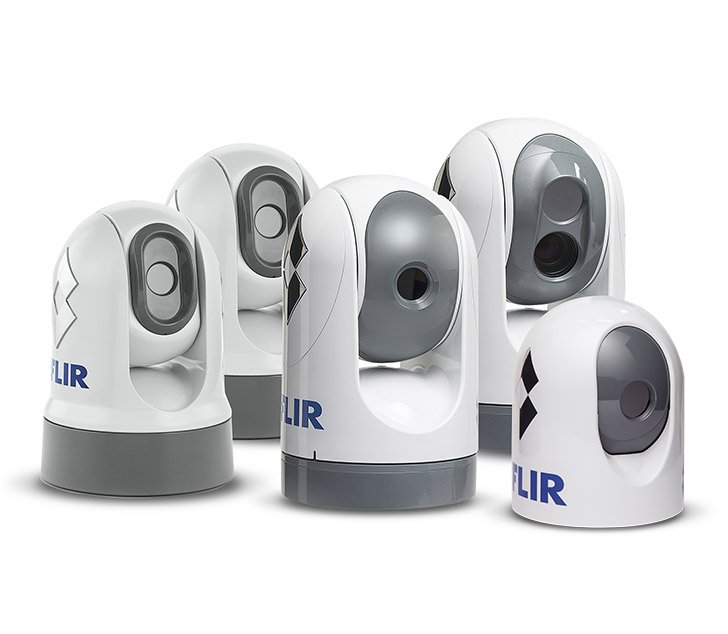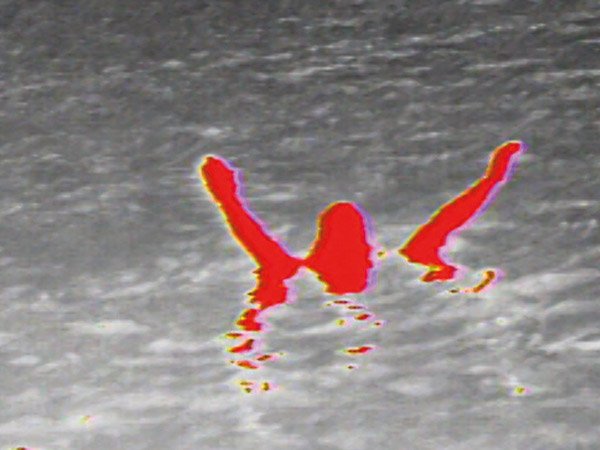FLIR | Forward Looking Infra-Red

As often happens, after an exclusive first use, complex instruments or systems of military technology are made available for use in the civilian field.
The vision system, FLIR, from the acronym “Forward-Looking Infra-Red”, was developed by the U.S. Navy for military purposes. FLIR is the evolution of the first so-called “side scan” military systems, which, installed on satellites or aeroplanes, function just like scanners, depending on the motion of these to generate an image.
Unlike conventional night vision goggles, which exploit visible light, increase its effects and improve the operator’s vision, FLIR thermal imaging cameras use infrared radiation emitted by a body to create an image in real-time.
Night vision goggles operate if there is a minimal illumination source; the thermal cameras, on the other hand, work with particular effectiveness even in complete darkness and in conditions of poor visibility due to smoke, dust or fog.
FLIR represents the last frontier in terms of infrared viewers. Thanks to continuous technological improvement and the progressive reduction of costs, this tool is now used by law enforcement agencies worldwide, by organizations and companies for surveillance, research, rescue and industrial purposes, gradually starting to spread in the private sector and pleasure craft.
But how does it work?
The FLIRs use particular sensors that operate in two infrared bands: the long wave band (LWIR) and the medium wave band (MWIR), detecting the amount of infrared radiation, invisible to the human eye, emitted by various objects or forms of life. These sophisticated tools allow once the signals are sent on the screen, to discriminate the targets sufficiently clearly, showing the amount of heat they emanate.The fundamental differences between the two types of sensors are in the distances in kilometres they can cover. Those operating in the medium band (MWIR) between 3 and 5 µm (micrometres) are less affected by atmospheric phenomena (absorption, refraction, dispersion) and are more performing, covering greater distances; on the other hand, they are more expensive and require a complex cooling system. For example, the fixed thermal imaging camera they installed a few years ago in Ravenna at the tip of the dam had a cryogenic nitrogen cooling system so expensive that only police, surveillance, or research purposes could justify its use. In everyday use, the “few” kilometres guaranteed by sensors operating in the extended band (LWIR), between 8 and 12 µm (micrometres), less sophisticated, less expensive and smaller in size, are more than sufficient.
What is its use?
The military purposes are intuitive. A navy ship equipped with FLIR can monitor the enemy from a distance in complete anonymity. The user can distinguish the hot parts, such as the engine, from the cold ones, such as the hull; the crew members (hot) will be visible, as well as any (cold) weapons held up or hidden under their clothes. The fight against piracy and terrorism is where FLIRs fully express their potential.But the uses are now varied. To highlight a few: in the field of Public Safety, traffic control and accidents of various kinds; in S.A.R. (Search And Rescue) operations on land or at sea, stabilized target tracking and man overboard detection; in firefighting operations, identification of gas leaks, hot spots and missing persons; or in the industrial field, detection of humidity infiltrations and insufficient insulation.
Users can mount a thermal imaging camera on fixed or mobile locations, large cruising ships, merchant ships or small boats, and drones for wide and varied use. Thermal security cameras are practically impossible to evade. This feature makes them useful for both public and private surveillance.

Pilots worldwide have also installed FLIR on some pilot boats. In addition to often having to deal with emergencies at sea of all kinds, alongside the Coast Guard, the Pilots travel daily stretches of the sea with high traffic density, in all weather conditions and, wherever possible, at high speed. FLIR also finds its usefulness in identifying semi-submerged objects dangerous to navigation, ensuring the highest degree of safety obtainable today.
